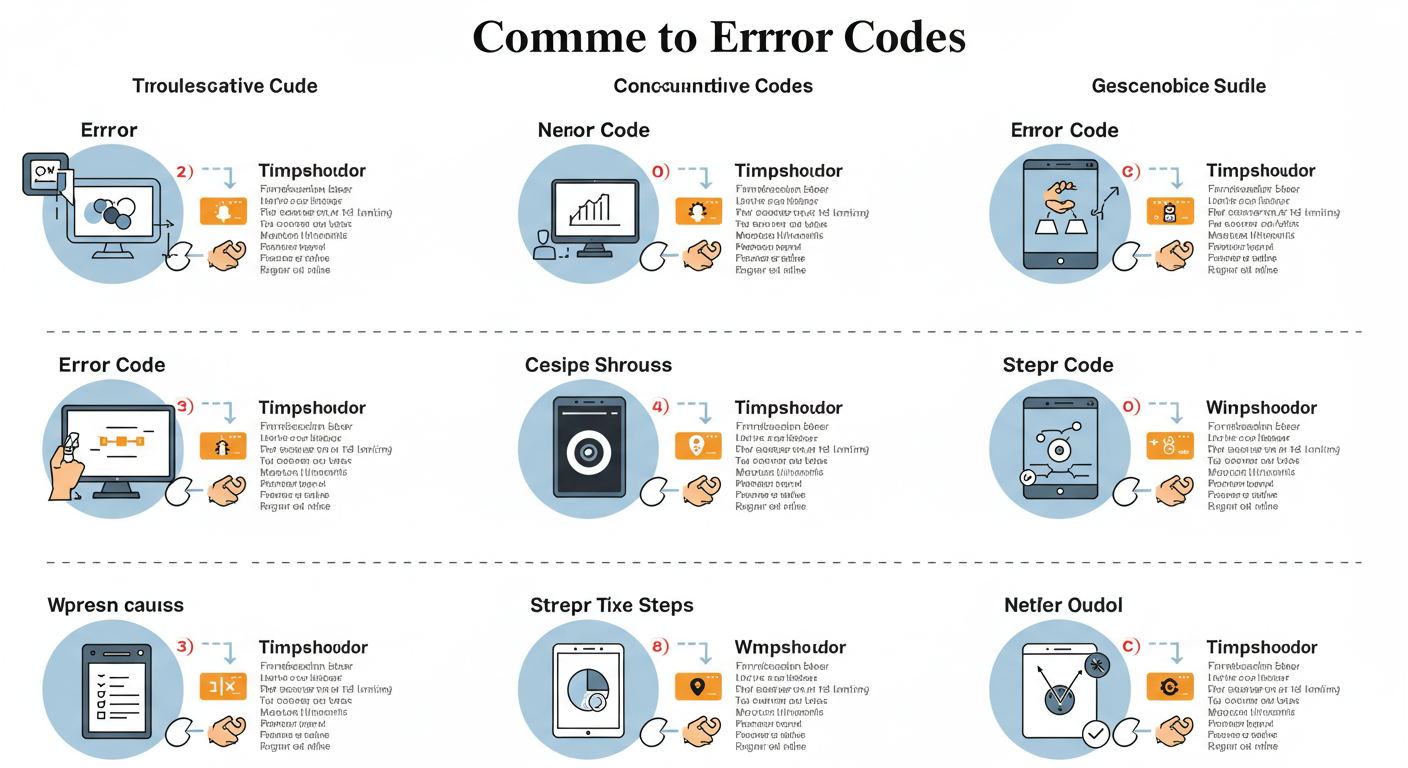So there I was, sitting at a café in Singapore, sipping a kopi O and battling yet another 1050 – Internal Server Error from the FintechAsia API.
My app was meant to be live that morning, but instead, I was wrestling with stack traces, digging through JSON responses, and quietly begging the Webhook Debugger to just, like, talk to me nicely for once.
If you’ve been down that API rabbit hole before, welcome to the club. Whether you’re a sleep-deprived developer, an overwhelmed SMB trying to plug into Digital Wallets, or a product manager asking “why isn’t this working” for the fourth time in 5 minutes… this guide’s for you.
Let’s not just list error codes – let’s feel ‘em, fix ‘em, and maybe laugh about ‘em too. Cos trust me, when you’re staring at a Rate Limit FintechAsia notification at 3 AM, you need a little levity.
Profile Biography of WizzyDigital.org
| Attribute | Details |
| Blog Name | WizzyDigital.org |
| Founded By | Independent Digital Strategists |
| Primary Focus | Digital Marketing, Online Growth, and Tech Insights |
| Launch Year | 2020 |
| Content Type | Blog Articles, Tutorials, and Guides |
| Target Audience | Entrepreneurs, Startups, Marketers, and Digital Learners |
| Notable Features | SEO Tips, Tech News, Case Studies, and Digital Trends |
| Website | www.wizzydigital.org |
The Human Side of API Errors (Yes, There Is One)
You know what they don’t tell you when you start out building in FinTech? That you’ll spend way more time debugging than building. But behind every error code is a real person, a real intention. Sometimes even a real deadline slipping through your fingers.
That’s why this ain’t no cold, robotic docu-dump of messages. It’s a live, breathing guide based on actual frustrations from real people who’ve used FintechAsia tools like API Console, JSON validator tools, and the Sandbox environments.
So if you’re wondering “is it just me?”—nope. It’s everyone at some point.
1001 – Authentication Failed: When the API Slams the Door in Your Face
Let’s start with the classic. The dreaded:
1001 – Authentication Failed
Honestly, this one’s like showing up to a party and the bouncer says, “Who even are you?”
What’s Happening?
This error usually means the access token you’re sending in your request is invalid, expired, or not even there. Sometimes, it’s just a rogue space in the bearer token. Like… bruh.
Real Fixes from Real Devs
- Double-check your access token FintechAsia gave you in the developer portal. Copy-paste with love, not haste.
- Don’t forget to prefix it with
Bearer(no extra spaces!). - Refresh that token regularly, especially if you’re dealing with secure API communication over longer sessions.
- Check your Sandbox environments vs production — mixing credentials? Easy mistake. Fatal consequences.
Pro Tip:
Use tools like Postman or the FintechAsia API Console to test individual endpoints with different tokens. Sometimes it’s your app, not the token.
1002 – Unauthorized Access: You Shall Not Pass (Yet)
Gandalf-style vibes. You authenticated, but you’re still not allowed in.
1002 – Unauthorized Access hits when your user doesn’t have the right permissions. Or when your app is trying to access something it shouldn’t. Like poking into enterprise-level features with an SMB-tier token. Big nope.
Common Scenarios
- Accessing a developer banking tool without the proper scope.
- Using API keys meant for one service across another (e.g., API Payments vs Digital Wallets).
- Team member revoked your token on Slack but forgot to tell you. Thanks, Ravi.
What To Do
- Check your FintechAsia documentation for permission levels per endpoint.
- Use the Status Page to ensure services are active.
- Contact FintechAsia support via Discord or the dev forums for help with permission escalations.
Read this blog: https://blessloom.com/pocketmemories-net/
1010 – Invalid Request Format: When JSON Gets Jealous of XML
You wrote the payload. You swear it looks right. But FintechAsia replies with:
1010 – Invalid Request Format
This one stings cos it’s often caused by invisible things — wrong quote marks, bad line breaks, or typos that your eyes just can’t see anymore.
Debugging Tips
- Run your payload through a JSON validator tool. Every. Single. Time.
- Check for required fields — FintechAsia can be very picky about missing attributes.
- Watch the nesting — even one level off can break things.
Mini Story:
A startup in Manila spent 3 days stuck on this error. Turned out the payload was missing a closing curly brace. When they fixed it, someone cried. That someone was their CTO.
1020 – Rate Limit Exceeded: Slow Down, Champ
It’s all working fine and then — bam — you hit:
1020 – Rate Limit Exceeded
This is FintechAsia’s way of saying “take a nap, you’re sending too much stuff.” It’s about rate limiting strategies and API health, not personal attacks (even if it feels personal).
You’re Seeing This If:
- Your app sends hundreds of requests per second (usually during syncs).
- There’s a rogue loop somewhere.
- You’re in a test loop using Sandbox environments too aggressively.
Solutions That Work
- Implement exponential backoff in your retry logic.
- Monitor rate limits via headers returned by the API.
- Use caching where possible to reduce redundant calls.
“Learning to respect the rate limit taught us patience. And throttling.” — Wei, backend dev at a fintech company in Singapore.
1030 – Resource Not Found: Did You Even Look?
Getting a 1030 – Resource Not Found is like texting your ex and getting “new phone, who dis?”
Why This Happens
- You’re calling an endpoint that doesn’t exist. Typo? Wrong version? Missing ID?
- You’re referencing a resource that was deleted (or never existed).
- You’re in the Sandbox but using a production resource ID.
Reality Check
- Double-check the resource ID you’re sending. Especially if it’s dynamically generated.
- Use FintechAsia’s Status Page to see if anything’s temporarily down.
- Re-read the endpoint URL. Yes, again.
1050 – Internal Server Error: It’s Not You, It’s Probably Them
Ohhhh boy. This one’s the worst because:
1050 – Internal Server Error = 🤷
It’s the shrug emoji of error messages.
What’s Going On?
- The server encountered something unexpected and didn’t know what to do.
- Could be maintenance. Could be a temporary glitch. Could be gremlins in the API.
What You Can Actually Do
- Check the Status Page. If it’s a known issue, it’ll be there.
- Re-run the request after a minute or two.
- Log everything. Especially request IDs and timestamps. FintechAsia support can use that data to track down the problem.
Real-Life API Troubleshooting Rituals (Yes, Rituals)
Here’s how actual dev teams handle FintechAsia API troubleshooting:
- Morning Standup Includes a “Weirdest Error of the Day” Segment: Makes it bearable.
- “One Last Try” Rule: After 5 failed attempts, someone else tries. Fresh eyes catch weird stuff.
- Rate Limiting Bingo: Devs bet on which request will finally tip the rate limit. Winner gets coffee.
Across cultures, folks have different “debugging rituals.” In Vietnam, one team leaves a sticky rice offering at their router. In a startup in Mumbai, the intern has to whisper encouraging words to the code before deployment. Superstition? Maybe. Effective? You bet.
Developer Tools You Need (No, Really)
Whether you’re enterprise-grade or a weekend hacker, here’s what helps:
- Postman: For testing and saving endpoints. A classic.
- Slack and Discord: For community support (and screaming into the void).
- FintechAsia API Console: Test directly within the docs.
- JSON validator tools: Never skip.
- Webhook Debugger: Find out what FintechAsia’s really sending you.
- Status Page: Always check before blaming your code.
How to Write a Custom Message to FintechAsia Support
You will need to contact support at some point. Make their life easier (and yours) with this format:
- What you’re trying to do.
- The exact error message/code.
- The endpoint URL.
- The full request payload (obfuscated if needed).
- Timestamp (UTC, if possible).
- Any relevant request ID or response headers.
The more you give, the faster the fix.
Wrapping It Up: Your API Might Be Smart, But You’re Smarter
Integrating with FintechAsia isn’t just about code. It’s about understanding the ecosystem, learning the quirks, and embracing the chaos. Every error code is a teacher — some just yell louder than others.
So next time you see Error Code 1001, don’t scream. Smile. You’re leveling up.
And hey, if you’ve got your own FintechAsia error horror story (or survival tip), drop it in the comments. You never know who you might help.
Let’s debug boldly, push fearlessly, and drink enough caffeine to power a Digital Wallets server cluster. Stay curious. Stay kind. And may your tokens
Freqeuntly Asked Questions
fintechasia error codes
FintechAsia error codes help identify issues in API transactions, such as authentication errors or server problems.
error code fintechasia
Each FintechAsia error code corresponds to a specific problem like invalid requests, rate limits, or missing permissions.
error codes fintechasia
Understanding these codes allows developers and users to troubleshoot issues quickly and ensure smooth integration.











